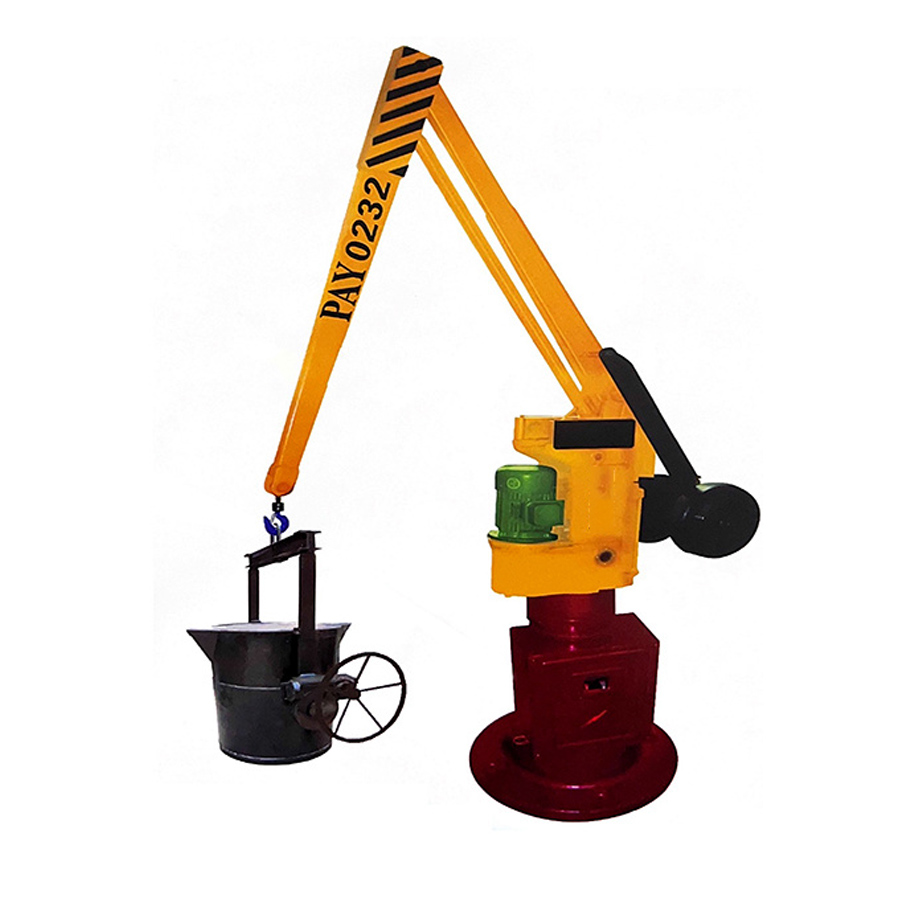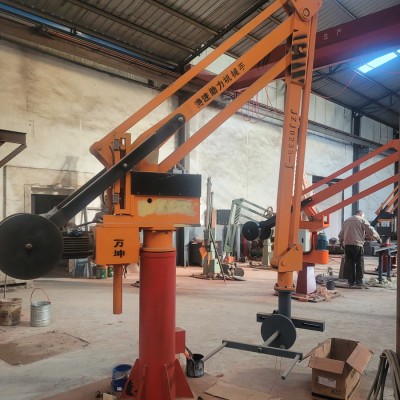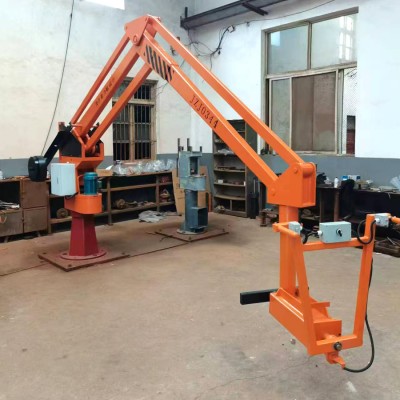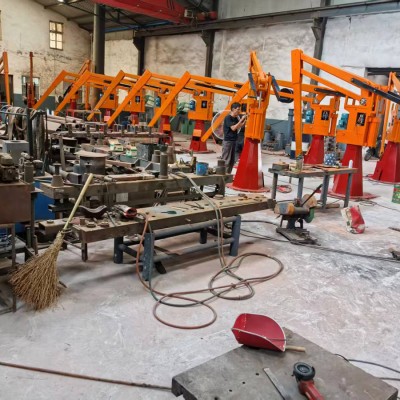Hydraulic casting manipulator hydraulic System failure Reasons
In foundries, Casting manipulators operate continuously under harsh conditions of high temperature, high dust, and high load, and it is inevitable that some malfunctions will occur, with hydraulic system failures being particularly common. Understanding these common fault analyses and handling methods is helpful for preventive maintenance and reducing downtime.
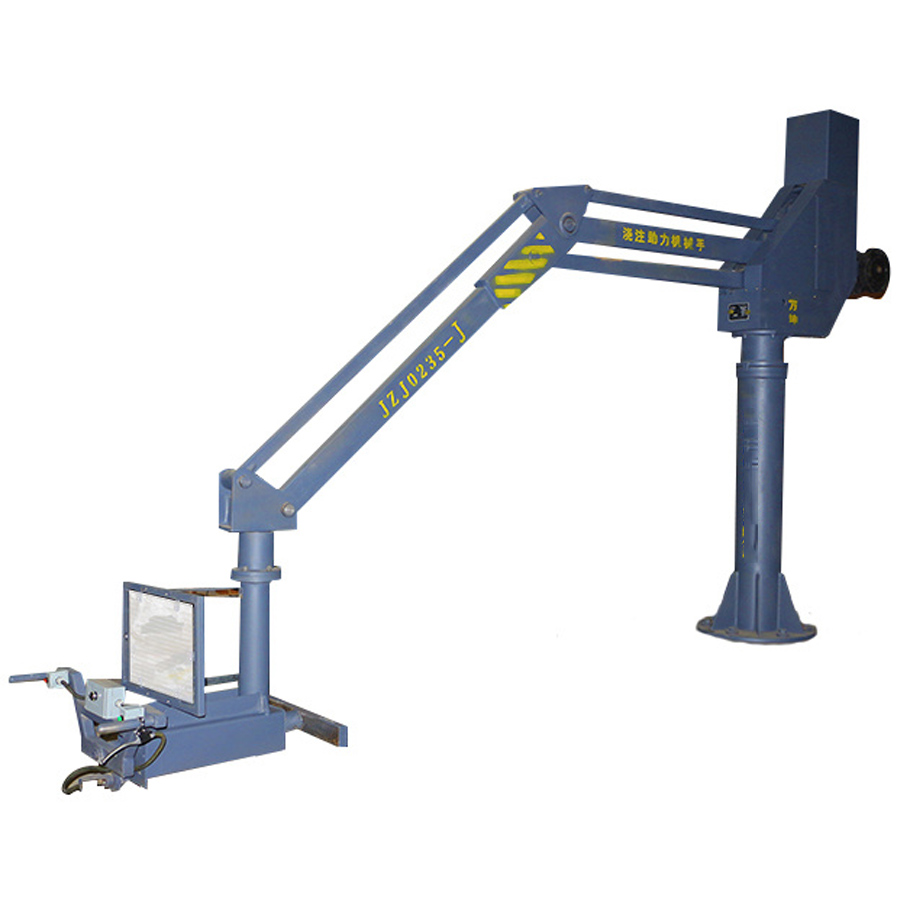
Phenomena of hydraulic system failure
Leakage or insufficient pressure
Aging and wear of hydraulic pipelines, seals or valves can lead to hydraulic oil leakage or insufficient system pressure, which is manifested as weak actuator, slow or irregular movement, oil stains on the ground, and inability to maintain pressure.
Pump/motor failure
Abnormal flow occurs in the hydraulic pump or motor due to issues such as cavitation or overheating, which affects the response speed and accuracy of the mechanical hand.
Control valve blockage
Impurities or oil stains enter the hydraulic valve, causing the valve core to get stuck, which leads to the mechanical hand's movement being stuck or unable to maintain its position.
Common causes and solutions of faults
Abnormal system pressure (insufficient pressure or no pressure)
Possible causes
Hydraulic oil issues: Insufficient oil volume, too low oil viscosity (due to excessively high temperature or improper oil quality), oil contamination causing the suction filter to be clogged.
Hydraulic pump failure: Internal wear of the pump (such as blades, plungers), pump shaft breakage or drive motor failure, resulting in the pump being unable to supply oil normally.
Relief valve failure: The valve core is stuck in the pressure relief position, the pressure regulating spring is broken or fatigued, the pilot valve is blocked or damaged.
System leakage: Pipeline burst, loose joints, and damaged sealing rings can lead to severe internal or external leakage.
Treatment method
Check the hydraulic oil: Check the oil level and replenish it to the specified range. Check the oil temperature and activate the cooler if necessary. Take samples of the oil for testing. If it is contaminated or deteriorated, replace it. Clean or replace the oil suction filter.
Diagnostic hydraulic pump: Listen for any abnormal sounds during pump operation (such as cavitation sounds or knocking sounds), and test the pump outlet pressure. If damage is confirmed, the hydraulic pump should be repaired or replaced.
Check and adjust the relief valve: Try adjusting the pressure handle and observe whether the pressure changes. If there is no change, disassemble, clean or replace the relief valve.
Check for leakage points: Conduct a comprehensive inspection of the pipelines, joints and hydraulic cylinder seals. Deal with the leakage point and replace the damaged parts.
Too high oil temperature
Reason
Poor heat dissipation: The cooler is clogged, the cooling fan does not rotate, or the cooling water valve is not opened.
Poor operation of the system unloading circuit: The unloading valve malfunctions, and the oil still overflows back to the oil tank through the relief valve, causing the oil temperature to rise.
There are defects in the casting shell of the hydraulic component, such as sand holes and cracks, which cause an increase in leakage.
Improper selection or deterioration of the oil: Excessively high viscosity leads to large flow resistance.
Treatment method
Check the cooling system.
Improve the design by adopting variable pumps or the correct unloading method to reduce unnecessary energy loss.
Tighten the connecting parts, enhance the sealing, and reduce volumetric loss and heat generation.
Make sure to use the specified grade of hydraulic oil
Abnormal noise and vibration
Possible causes
Mechanical impact: Unreasonable pipeline layout causes mutual collision.
Hydraulic pump suction: Air enters the closed hydraulic system, generating noise during the operation of the pump and motor.
Pump or motor wear: Damage to bearings or internal components, generating mechanical noise.
Loose pipe fixation: The high-pressure oil pipe vibrates under pressure shock, generating a knocking sound.
Treatment method
Install an exhaust device on the hydraulic cylinder, or make the actuator perform several rapid full-stroke reciprocations to exhaust after the equipment starts.
Check the oil level, clean the filter element, and inspect the sealing of the oil suction pipeline.
When mechanical vibration occurs, all pipe clamps and joints should be tightened, and shock-absorbing pads should be installed on pipelines with obvious vibration.
Pay attention to the cleaning and inspection of the relief valve. If it is confirmed that the damage is inside the pump or motor, repair or replace it in time.
How to avoid faults in the Pouring equipment hydraulic system
For foundry manipulator, preventive maintenance is far superior to post-failure repair, and systematic measures need to be taken from multiple aspects.
Optimized design
Based on the working load, motion frequency and precision requirements of the manipulator, select the appropriate hydraulic pump, motor, valve type and actuator to avoid "a small horse pulling a big cart" or overdesign.
Standardize the operation process
Regularly analyze the physical and chemical indicators of the hydraulic oil to predict its service life. Replace the hydraulic oil and filters regularly. When refueling, it must be done through a filtration device to prevent contaminants from entering from the source.
Enhance personnel skills
Train the operators on the principles of the hydraulic system, fault phenomena and emergency handling. Regularly assess operation norms and correct violations (such as overloading and emergency stops).
Recording and Analysis
Sort out the time, phenomenon, handling process and replaced components of each fault to form a fault database. Identify high-frequency fault points through root cause analysis and improve design or maintenance strategies in a targeted manner.


